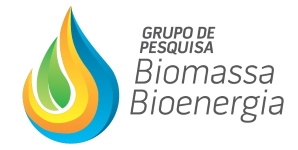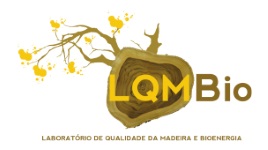SUGARCANE BAGASSE LOW HEAT VALUE INFLUENCES ON THE THERMAL EFFICIENCY OF A THERMAL POWER PLANT.
03 - Bioenergy: Economy, Market and Policy
 1 FERNANDO GONÇALVES DE SOUZA, 1 MARÍLIA MAGALHÃES GOMES, 1 VINÍCIUS CARVALHAES
1 FERNANDO GONÇALVES DE SOUZA, 1 MARÍLIA MAGALHÃES GOMES, 1 VINÍCIUS CARVALHAES
1 INSTITUTO FEDERAL DE EDUCAÇÃO, CIÊNCIA E TECNOLOGIA DE GOIÁS-IFG
A thermal power plant is a station where electric power is generated by a thermal source. This source can be obtained from non-renewable fuel burn, such as coal, or renewable fuel burn, such as biomass. There are disadvantages in the use of non-renewable fuels, for example: greater environment degradation, higher carbon dioxide emission and pollution, and lack of natural resource. Furthermore, the renewable fuels’ advantages are less pollution, highly reliability, cheaper and environmentally friendly. Consequently, the use of sugarcane bagasse is an alternative source for the bioenergy generation. Nowadays, Brazil and India produce around 60% of the sugarcane global production and less than 10% of this biomass production goes to the power generation sector, the rest of it is a waste of electricity generation capacity. There are almost two thousand thermal power plants in Brazil that generate close to one fourth of the country capacity. Among those thermal power plants, 434 are sugar-ethanol power plants which reuse their biomass from the sugarcane bagasse as a fuel to generate power. So there is a need of developing technologies that reuse this biomass, such as the sugarcane bagasse left from the sugar-ethanol plants and grains left from the oil industry. The state of Goiás produces around 50 MW in the sugar-ethanol sector and the great challenge for the power regeneration development is the improvement of the power efficiency so that the system can consume fewer natural resources and obtain higher amount of generated energy. Considering those facts and based on a thermal power plant study case from Morrinhos –GO, its thermal efficiency behavior is analyzed through graphs in relation to the output temperature and pressure in the boiler and it’s proposed a thermal efficiency improvement. Both graphs are obtained varying the bagasse low heat value (LHV) through a drying process. In order to analyze and calculate this problem, it is accomplished a numerical implementation routine (programming) based on the equations from the Rankine cycle energy balance, in which the thermal power plant operates. The graphs point out that the boiler output temperature or pressure increase, which is caused by LHV range, results in a better thermal performance. It also provides an increasing amount of vapor and higher work in the turbine. Besides that, there is an addition to net work and a thermal efficiency improvement so the bioenergy is generated in a more sustainable way.
Keywords: bioenergy, sugarcane, thermal power plant
Acknowledgments: This work acknowledges the use of biomass efficiently and bioenergy production in a thermal power plant from Morrinhos - GO.

























